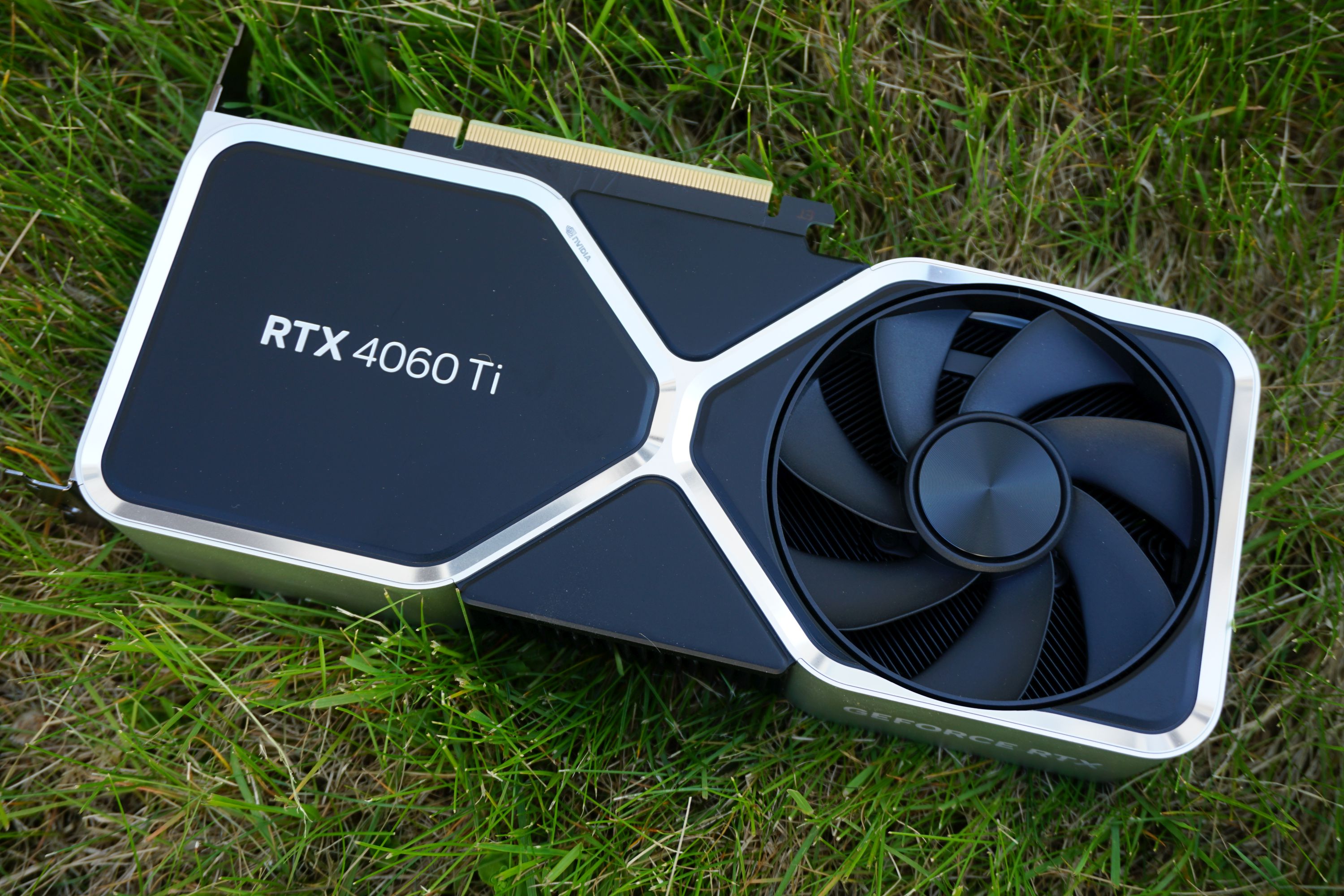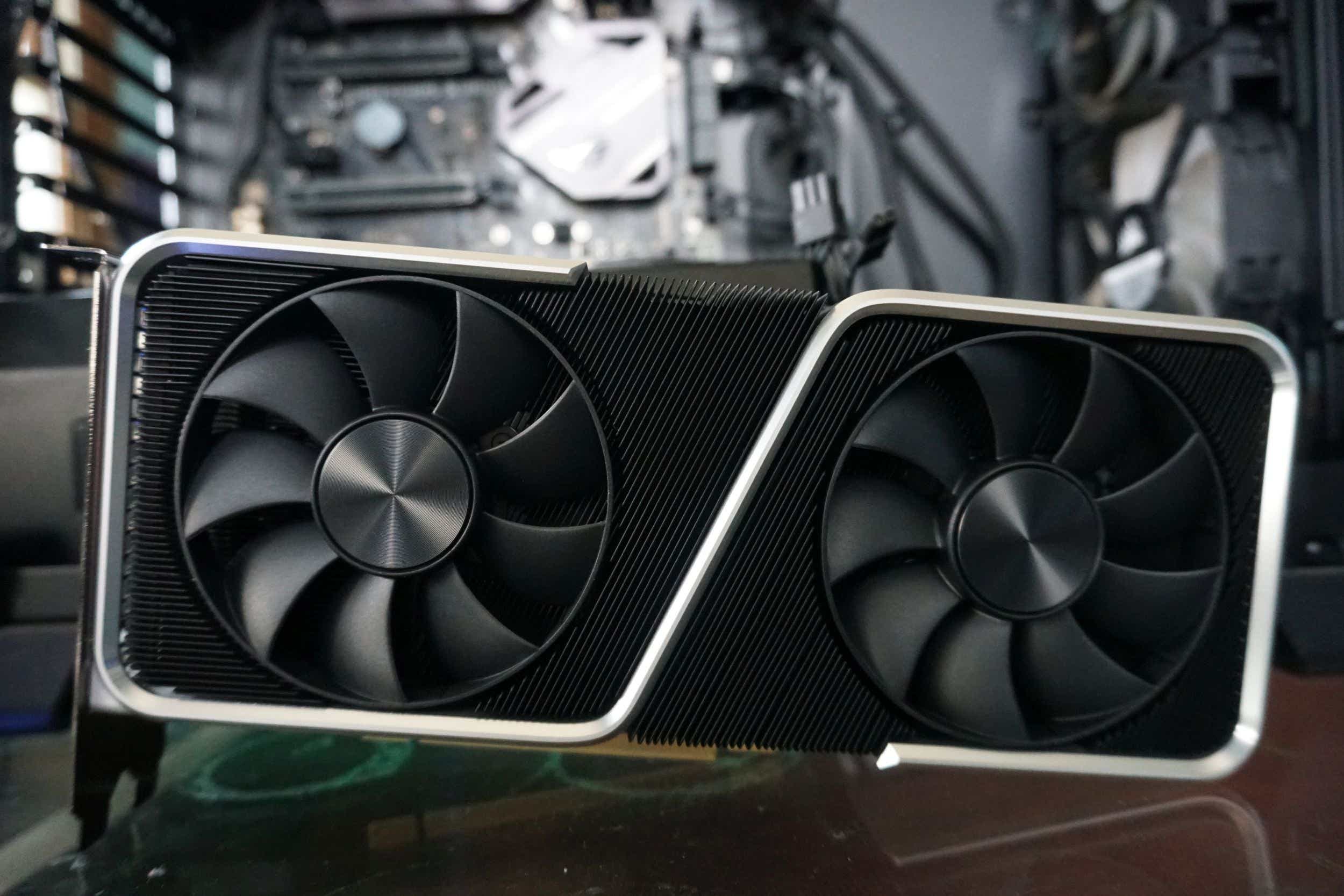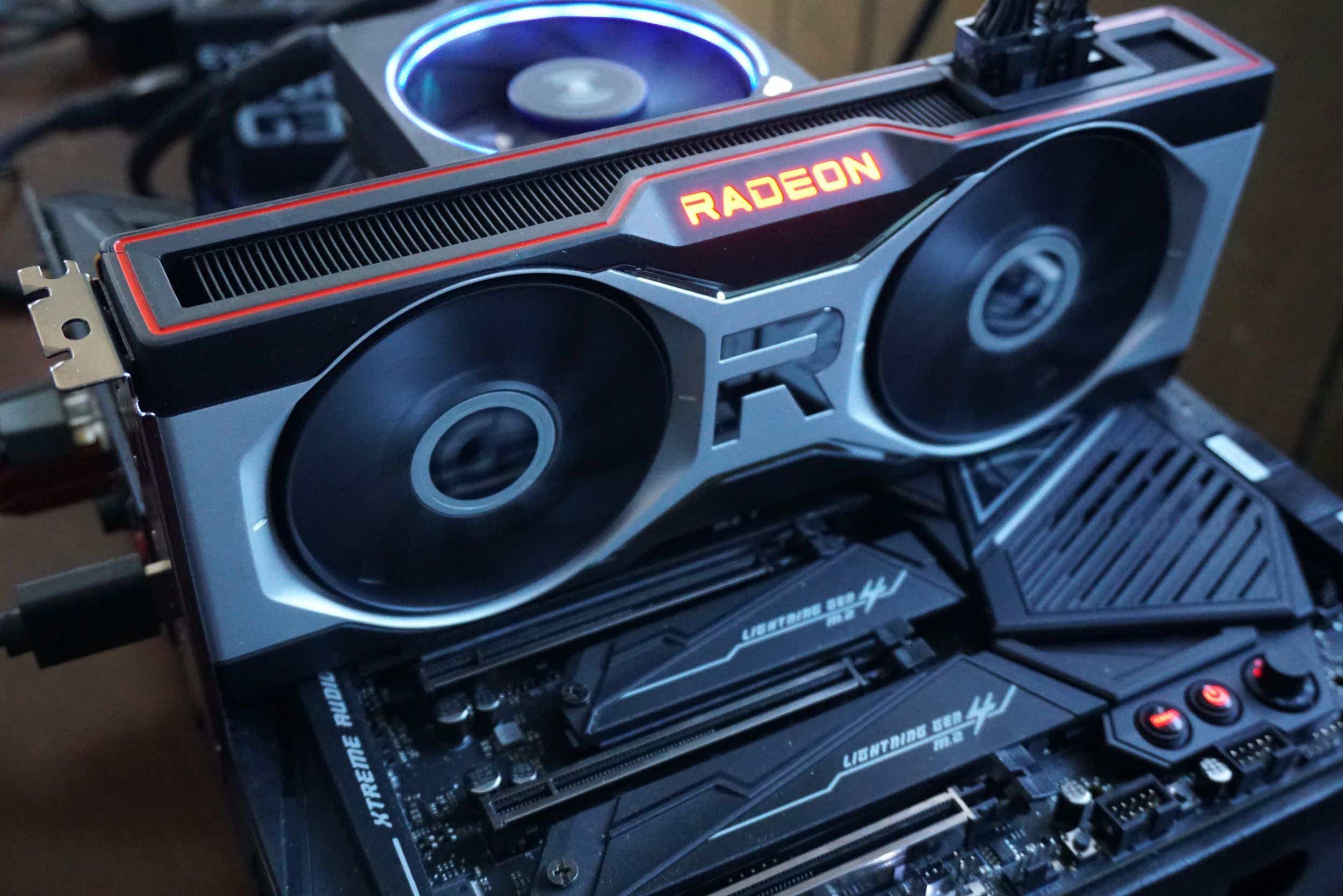8GB of VRAM, $399 MSRP. No, this isn’t 2020—it’s the Nvidia GeForce RTX 4060 Ti, launched in the middle of 2023. You’d be forgiven for mistaking this for the RTX 3060 Ti. And after seeing how closely it performs to its predecessor, you’ll probably be even more confused.
We won’t sugar coat it: This GPU has been a disappointment. We gave the Nvidia GeForce RTX 4060 Ti 2 out of 5 stars in our review, with DLSS 3 and lower power draw being a couple of the redeeming factors. The performance is mostly stagnant from last generation, and in an age where 8GB of VRAM is getting crushed in newly released games, it falls short.
To make matters worse, both the RTX 3060 Ti and AMD 6700 XT (which boasts 12GB of VRAM) are still both highly competitive because the 4060 Ti is so disappointing.
We will compare the price and availability of all three contenders, reflecting on the value they can provide in a difficult market where costs have soared. Next, we’ll evaluate the performance chops of all three: Can the older GPUs really stack up favorably against the new RTX 4060 Ti? Finally, we’ll note important features that you should be aware of. GPUs, start your silicon engines!
Be sure to subscribe to Thiago’s YouTube channel, Classical Technology, for detailed PC analysis like the video below and near-daily coverage of graphics card trends.
RTX 4060 Ti vs. RTX 3060 Ti vs. AMD 6700 XT: Price and availability
The Nvidia RTX 4060 Ti has launched in two distinct flavors: A $399 8GB variant, and a $499 16GB version that’s coming in July. Availability of the initial launch has been the best you’ll find, with ample stock. Even the rarer “Founders Edition” model can be easily picked up at its MSRP. Gamers seem to be acting in unison in choosing not to purchase this new release.
The Nvidia RTX 3060 Ti had a much more turbulent launch, with buyers rarely finding it in stock—and when they did, rarely at $399. Things have changed, and while the price is still high for this older GPU, it can be easily found for cheaper than the RTX 4060 Ti.
The AMD RX 6700 XT had similar, but not as drastic issues during its own launch. Packing a saucy $479 MSRP, it’s now going for well under that, and sometimes very close to $300 where it’s still available.
High pricing from last generation still lingers, even with the “Great GPU Shortage” behind us. That’s why you’ll often find older models, such as the RTX 3060 Ti, not much cheaper than the RTX 4060 Ti in certain retailers. Which should you buy of the three—if any? The next sections will guide you to a clearer picture. (RTX On meme intensifies.)
RTX 4060 Ti vs. RTX 3060 Ti vs. AMD 6700 XT: Performance
Performance is an objective battleground where we can clear up confusion surrounding the Nvidia RTX 4060 Ti. First, let’s tackle what is under the hood. 8GB of VRAM, but a much more limited memory bus bandwidth of only 128 bits. This has been the trend with Nvidia GPUs such as the RTX 4070 Ti, RTX 4070, etc.
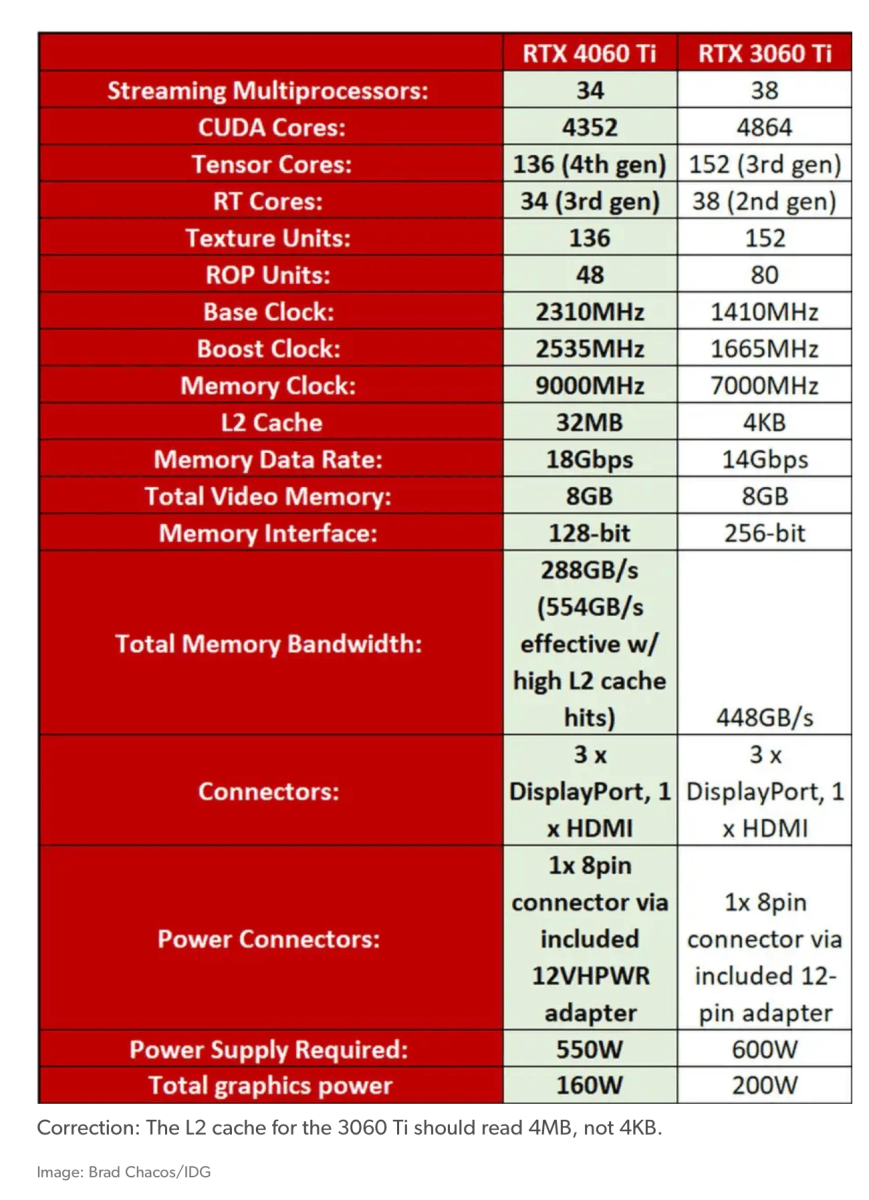
Brad Chacos
While Nvidia argues that the effective bandwidth is still sufficient for the RTX 4060 Ti since it packs more L2 cache, gamers will still find scenarios where this bandwidth limit rears its ugly head.
The Nvidia RTX 3060 Ti packed a 256 bit memory bus—more than even the RTX 4070 Ti has. Of course, the RTX 4060 Ti will have some DLSS 3 secret magic with its optical flow sensors, but that carries with it special caveats. These hardware limitations are why it’s possible to see limited or even negative performance gains on the newer RTX 4060 Ti versus the older GPUs in some scenarios (especially at higher resolutions).
Knowing that 8GB of VRAM is not enough in 2023 for many gamers—even 1080p can see drawbacks—a 16GB VRAM version cometh soon. The jury is out on if that will make a difference, but we fear that with a $499 price and performance that will usually be identical to the 8GB version, it may not be enough.
We can’t mention the RTX 4060 Ti without giving credit to the AMD RX 6700 XT. Packing a generous 12GB of VRAM with a 192-bit memory bus bandwidth, it certainly punches above its weight.
Let’s look at some performance numbers to see how these competitors play out in real-world gaming.

From PCWorld’s RTX 4060 Ti review.
Brad Chacos
At 1080p resolution—the intended use case for the Nvidia RTX 4060 Ti—we see some interesting numbers. There are some cases where it does pull away as expected, such as the 158.4fps versus the 137.7 of the RTX 3060 Ti. It also pulls away from the RTX 3060 Ti in Call of Duty: Modern Warfare 2, but the AMD 6700 XT is right up there at 117fps versus the 4060 Ti’s 119fps.
The back and forth continues, with the RTX 4060 Ti being only a few frames per second better than the RTX 3060 Ti on the “total average.” The AMD 6700 XT is not far behind, either. When taking the pricing and age of these GPUs into consideration, the RTX 4060 Ti is only a mild improvement.
It’s clear that owners of these two older GPUs should not look to upgrade to the RTX 4060 Ti. It may only make sense for those with much older GPUs.

From PCWorld’s RTX 4060 Ti review.
Brad Chacos
If you weren’t impressed with the RTX 4060 Ti at 1080p, you will surely be disappointed with 1440p performance. Some titles even have the RTX 3060 Ti with a superior lead—such as Counter Strike: Global Offensive. Even excluding this game, the overall FPS average is a tie of 89fps between the two older GPUs, just short of 96fps of the RTX 4060 Ti. Certainly, almost negligible performance gains over an entire generation.

From PCWorld’s RTX 4060 Ti review.
Brad Chacos
Before the RTX 4060 Ti taps out, let’s give it an easier time. Ah, DLSS 3 and ray tracing—now it can breathe easier, right?
Since the RTX 3060 Ti doesn’t have frame generation in its DLSS flavor, the FPS gains are constrained. Likewise, FSR 2 on the AMD 6700 XT does not jump up much either.
DLSS 3—with frame generation on and Nvidia Reflex—propels the RTX 4060 Ti to much higher FPS, as in the case of 122.5fps in Cyberpunk RT Ultra. The gap in FPS continues with games that support frame generation, such as F1 2022.
There’s a problem, however. DLSS 3 is not available on many games—and even some new releases such as Jedi Survivor, omit DLSS entirely. There’s another problem pointed out by Brad Chacos: DLSS 3 simply does not look as promising when starting off at 1080p. It makes great sense at 4K or 1440p, where you still have a high starting resolution to downscale. At 1080p, you’re more limited, erasing some of the visual eye candy detail when using ray tracing and such. For that reason, it doesn’t make DLSS 3 as effective on the RTX 4060 Ti as you’ll find at the upper echelon of Nvidia GPUs where there is more brute force.
In conclusion for performance: The RTX 4060 Ti is not a worthwhile upgrade over either the RTX 3060 Ti or the AMD 6700 XT. While DLSS 3 and ray tracing performance is better, the lower-resolution entry point limits the appeal.
RTX 4060 Ti vs. RTX 3060 Ti vs. AMD 6700 XT: Efficiency and features
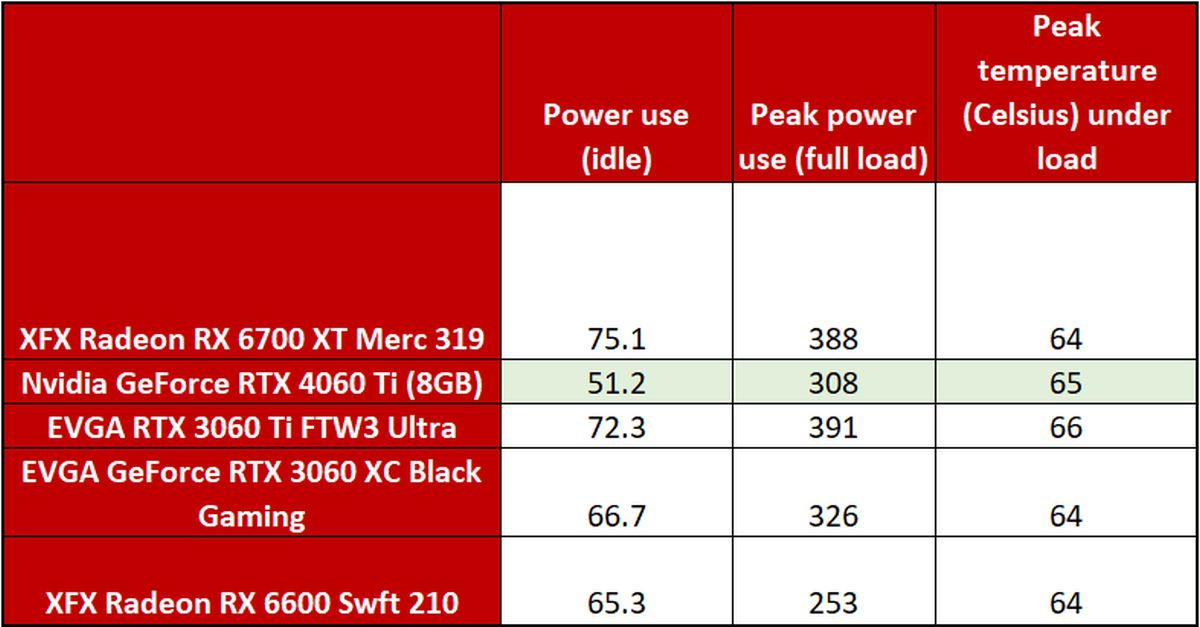
From PCWorld’s RTX 4060 Ti review.
Brad Chacos
This is where the RTX 4060 Ti truly shines—power efficiency. If looking at its performance through the lens of the power it puts out, this GPU is certainly impressive. Perhaps it is a combination of the new architecture, and some of the limited hardware specs versus the last generation that help it achieve these numbers.
A hallmark of DLSS 3 is its ability to aid FPS performance with a lower power draw. This is certainly a feature that’s absent on both the RTX 3060 Ti and AMD 6700 XT, which both draw more power on average.
The Nvidia-centric features are also a factor when looking at the RTX 4060 Ti. The AV1 encoding capabilities, along with the usual suite of software, such as Nvidia Reflex, help to round it out.
Unfortunately, aside from DLSS 3 and perhaps some better performance for content creators, the RTX 4060 Ti really does not offer enough of an improvement for a substantial upgrade. The power efficiency is fantastic, but these GPUs aren’t for laptops—gamers want better performance, VRAM specs, and pricing first.
RTX 4060 Ti vs. RTX 3060 Ti vs. AMD 6700 XT: Which wins?
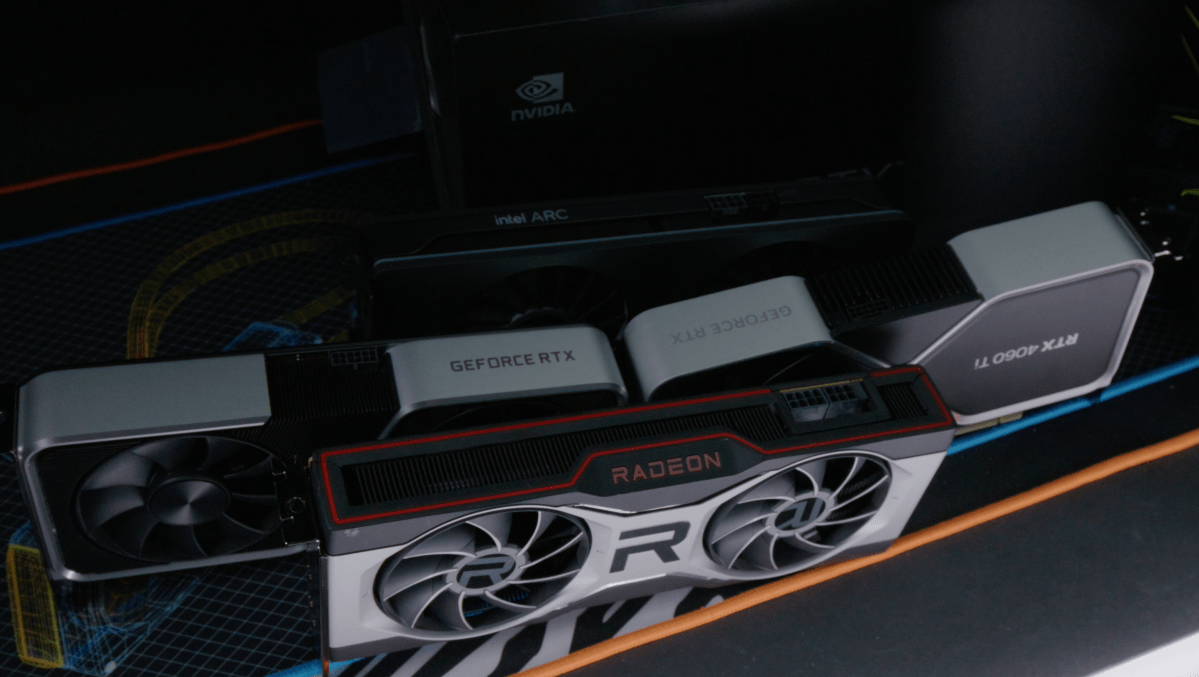
Thiago Trevisan
The RTX 3060 Ti was a popular GPU in its day, with almost-RTX 3070 level performance for $399. In 2023, the release of the GeForce RTX 4060 Ti is a disappointment. 8GB of VRAM is simply not enough in 2023 for any sensible future-proofing—as many new releases already struggle with the limit. Given that the RTX 4060 Ti is only a marginal improvement over the RTX 3060 Ti, it really shows how the RTX 3060 Ti was a stellar product that aged well.
The AMD 6700 XT is the interesting option in the lineup. It comes with a much healthier 12GB of VRAM and performs relatively well in comparison to both the RTX 3060 Ti and RTX 4060 Ti. It can also be found for cheaper than the RTX 4060 Ti. It does have some drawbacks—mainly higher power draw, no DLSS 3, and worse ray tracing performance compared to Nvidia.
Today, both of these older GPUs have stood the test of time and aged gracefully. The Nvidia RTX 4060 Ti still cannot be recommended—it just offers too little in the modern age. It would have been more successful as an RTX 4060 or similar-level GPU instead, at a much lower price.
Be sure to subscribe to Thiago’s YouTube channel, Classical Technology, for detailed PC analysis like the video below and near-daily coverage of graphics card trends.

